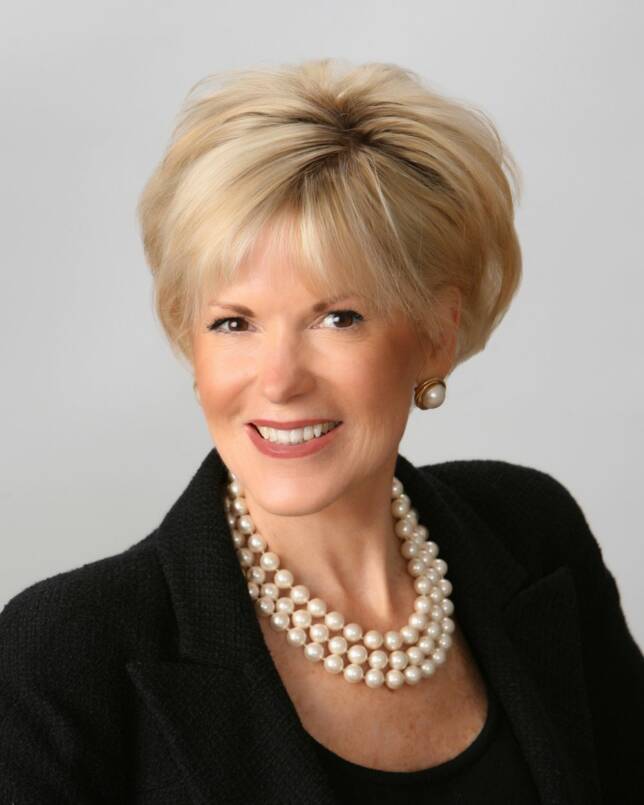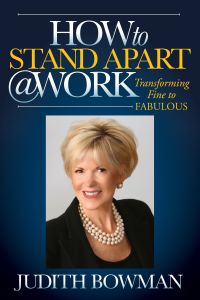Protocol Consultants International
Navigating the Zoom Business Meeting
by Judith Bowman on 05/28/20
- alert others in your household to your call. Ask for their respectful consideration and this will be reciprocated. If babies crying, dogs barking, doors slamming are unavoidable, alert hosts in advance. That said, attention to ring tones, music, etc., are within your control. Be sure to silence these.
- adjust lighting to optimize your visual e.g. position light from either below your face or from the sides. Your face should be eye-level to the camera lens.
- Exude positive energy and have a pleasant, positive, inviting facial demeanor (contagious!) Keep lips slightly apart and UP (use a mirror.)
The Silver Lining
by Judith Bowman on 05/05/20
The New Normal
by Judith Bowman on 04/03/20
Presentation Skills - POST
by Judith Bowman on 03/25/20
Presentation Skills - DURING
by Judith Bowman on 12/19/19
- No more than 3 bullets per view.
- Less is more.
- Own your material.
- Refer selectively to power points.
- Ensure that their view includes you.
- Refer to slides selectively. Reading word for word is not only insulting to your audience's intelligence, it diminishes your powerful impact.
- Looking up: the perception is "heaven help me."
- Looking sideways: suggests you are "shifty."
- Looking down and pausing again before completing your thought implies that you are a thoughtful person and this is a highly effective technique.
- a laser light
- the first two fingers together (index and third fingers),
- the open hand or
- thumb over fist
4th Annual “Massachusetts Day of Civility” – Make Someone Else’s Day!
by Judith Bowman on 11/19/19
Presentation Skills - PRE
by Judith Bowman on 11/01/19
- Pre-arrange a moment with your introducer to shake hands during the "hand-off." have ample support material and handouts available; bring extra bios, just in case.
- graciously decline offers of soda (gives you gurgles) and coffee (coffee breath!)
- ask for a glass of water. You are not a plastic water bottle or a Styrofoam cup presenter - there is a difference. A glass quietly congeals your manner and tenor.
- drink: away from your audience and turn away from the microphone to avoid disconcerting gulping and guzzling sounds. Avoid the "death grip!" ...hold the glass with your first three fingers toward the bowl of the glass.
- identify the clock in the room.
- remove your watch (Ref. George H.W. Bush! Story!)
Interviewing!
by Judith Bowman on 09/13/19
- Exchange cards (use "calling cards")
- Bring extra resumes
- Ask before taking notes
- Take personal notes to use in subsequent communication
Be prepared to tell your 'story' including choices you made, why you made them and how they have led to the next level which has brought you here today.
Motivation!
by Judith Bowman on 08/29/19
- Offer your help.
- Extend a compliment.
- Offer unexpected praise.
- Give someone a smile.
- Give a gift of appreciation for no particular reason at all.
- Acknowledge others privately.
- Publicity recognize others who helped you get to a pivotal moment.
- Thank those behind the scenes and show them their work is seen.
- Write a thank you note.
How Business Attire Builds -or Breaks- Your Brand
by Judith Bowman on 07/15/19
Neutrals are best. Your top - shirt, blouse or sweater should not be too bulky or form-fitting. A crew neckline is "never wrong" and eliminates (flapping) shirt collar phobia. Sheer lace, excessive ruffles, bare backs and cleavage are taboo. Toss anything even remotely worn looking.
The timeless traditional business suit e.g. skirt/dress is "never wrong" the world over especially in High Context Cultures such as Japan. If you feel you look better and therefore perform better in pants, the pant suit is widely acceptable for women in business today. If you elect to wear pants, a pant suit (rather than slacks and a jacket) is the best choice. The blazer look is considered more casual. Remember to button your jacket leaving the bottom open to vent.
Wearing hosiery is being "finished" and presents a polished look.Even when the temperature is 110 degrees, hosiery is appropriate for professional women in business. Choosing the right color is important. In warm summer months choose neutral shades or beige; white hosiery is reserved for nurses and is considered taboo in business.In transitional months, opt for tan. Other than neutrals, tans and beige, black opaque in cooler months is appropriate.The most common faux paswith respect to women's attire in business is wearing sheer black hosiery during the day. "Sheer" black hosiery is the formal, the most elegant and reserved for evening and formal events.
Shoes should be classic ... comfortable (!)polished, professional. The classic pump is "never wrong." Suede is considered a notch above leather and no more expensive; spectators are fabulous. Shoe taboos in business: no sling backs, open toes, stilettos or flats (except with pants); the ballet flat is acceptable for a more casual look. Sandals do not make a professional statement, no matter how you wear them. Rule: shoes should be darker than your hemline.
Remove boots before going into any business meeting/networking function or social event.
Jewelry is an appropriate wardrobe complement that also makes a personal statement and can be a great conversation launch, which also speaks professionally to your eye to detail. The working rule is: Less is more. When in doubt, do without. Gold and pearls are still considered the most classic choices. If silver flatters your skin tone or matches your i.e. eyeglass frames or other aspects of your attire, silver would be an acceptable choice. Nothing that dings, dangles or distracts should be worn i.e. earrings, bangles or charm bracelets, etc.. While these are wonderful accessories socially, they will detract from your professional message.
A classic scarf is a timeless accessory, often a conversation launch and speaks again to your eye for detail.
Invest in a small (black) classic understated purse that you can wear over your shoulder at any business meeting, interview or networking event and forget about vs. a large bulky fashionable purse.
Opt for professional colors and classic styles. Ski parkas and other sporty coats are fine for the slopes and weekends however, they will not enhance your professional image. Dark colors, a khaki beige or green conveys the appropriate level of professionalism. Rule: the length of your coat should be longer than your hemline - for women and for men. Mid-calf length is more professional than above the knee. If your coat is worn, or frayed, replace it. If it is ill-fitting, have this tailored to fit well. Make sure to maintain and dry clean regularly. The coat you wear will be visible to your clients (reception/office area) and however subliminally evaluated. Consider your overcoat, as you consider the rest of your attire.
Touching and Personal Space
by Judith Bowman on 06/30/19
- extend a rigid arm/handshake to maintain "arms' length" distance.
- say, "I'm not really a touchy, feeling person."
- insert a physical barrier - a desk or portfolio until the moment passes.
- humor is another deflector.
- make meaningful eye-contact and speak with your eyes.
- say, "you are making me uncomfortable."
- after a big project completion
- major life announcement/event (engagement/wedding) or a personal loss
- huge sale
- ask, 'may I give you a hug?"
- close your eye
- whisper (while hugging)... just ask Joe Biden how breaking that rule went!
- hug peers every day; make it special
- hug in a way you would feel uncomfortable with your spouse standing next to you
- hug from behind
- hug in the restroom
- sniff another person
Civility in 2019
by Judith Bowman on 02/20/19
Q: Can we evolve back into being a kinder, gentler, more compassionate society?
- Acknowledge others
- dress appropriately
- give them your full attention
- listen
- be "fully present"
- endeavor to understand
- sympathize
Charlie Baker says BE NICE!
by Judith Bowman on 11/15/18
 Saturday, November 17th is the 3rd Annual Massachusetts Day of Civility. A day when everyone, every family, and every company is encouraged to perform a random act of KINDNESS.
Saturday, November 17th is the 3rd Annual Massachusetts Day of Civility. A day when everyone, every family, and every company is encouraged to perform a random act of KINDNESS.
To get energized and to learn more:
The Value of your Referral Network
by Judith Bowman on 11/07/18
- Ask your connector if you may use their name; never assume you may.
- Ask honestly if they are willing to speak well on your behalf.*
that the connector will speak well of you.
- Ask the connector if you may keep them apprised of your progress. If so, copy your connector in initial correspondence, referencing their name in the body of your email/letter.
- Research your target.
- Customize your "tagline" and practice in advance to confidently articulate.
- Ask pre-planned probing questions specific to their needs.*
*Remember, the number one rule in sales: Identify the client need and fulfill that need!
- Stand when you speak.
- Use a mirror and pretend your reflection is the other person.
- Smile; project energy! A smile is "heard;" positive energy is contagious.
- Ask if you may send them your (company) information.
Telephone Skills and Techniques
by Judith Bowman on 04/06/18







